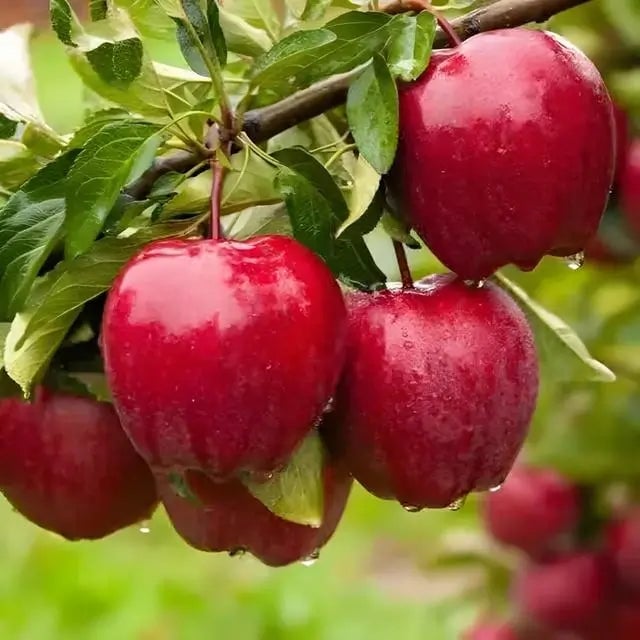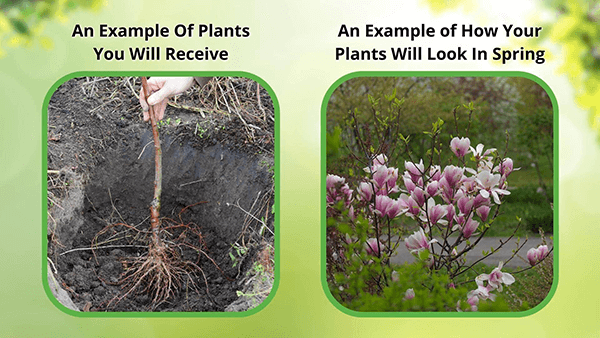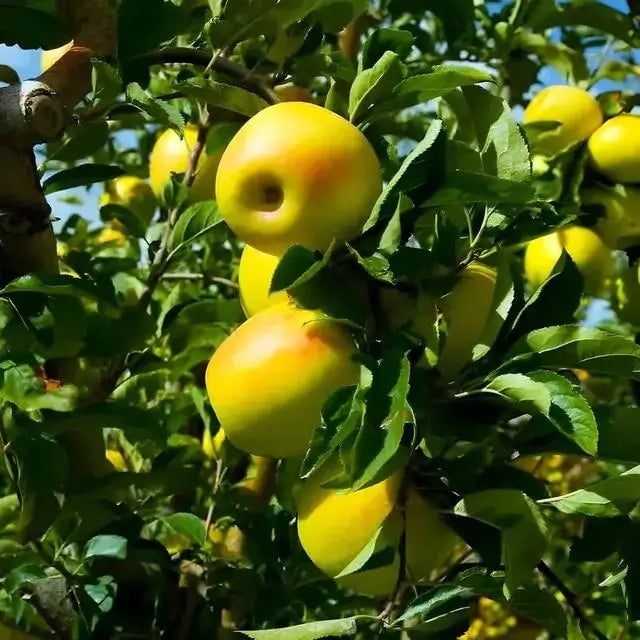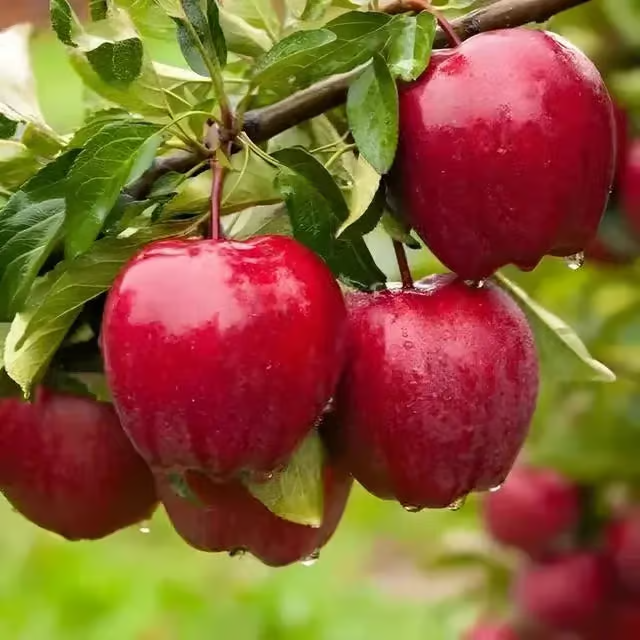



Apple Fruit Trees 3-4'
Beautiful springtime apple blossoms
Sustainable and eco-friendly choice
Encourages wildlife and pollinators
Thrives in
ZONE 4ZONE 5ZONE 6ZONE 7ZONE 8ZONE 9This plant ships:
Ships 7-10 Days1 Year Guarantee on all plants
Apple Fruit Trees 3-4' - Malus domestica
Wanting to eat an apple a day? Apple Fruit Trees 3-4' (Malus domestica) are rewarding fruit trees to grow, and you will literally be able to taste the results of your efforts. A great option for your home orchard.
Plant Details - Apple Fruit Trees 3-4'
Family: Rosaceae
Light Requirement: Full Sun
Water Needs: Moist
Height: 8 – 30 ft.
Spread: 6 – 25 ft.
Growth Rate: Fast
Bloom Time: Spring
Flower Color: White
Wildlife Value: Attracts bees
Landscape Uses and Maintenance – Apple Fruit Trees 3-4'
Apple Fruit Trees 3-4' are deciduous fruit trees that are a great investment for your property. These trees are simply a must have for any gardener trying to live a more sustainable life! Apple Trees get small white, pink, or red flowers that bloom in the spring.
Water thoroughly until well established; then let Mother Nature water. Plant in well draining soil. Do not plant in waterlogged or compacted soil.
As with many fruit trees, this tree needs care and maintenance. Be ready to tend to this tree and give it plenty of attention.
Plant your new tree in full sun. A full sun location is that which gets 8 hours of sunlight per day. In addition to ensuring that the tree is getting enough light, a full sun location will help make sure that your trees will dry out after morning dew, in turn decreasing the chance of fungal issues.
Fertilize in early spring with a balanced formula. Do not fertilize after the midpoint of summer. Add a layer of compost, humus, or leaf mold around the base of the tree, making sure to stay away from the trunk. Do not create a volcano around your tree!
Watch your trees for signs of disease or pests and treat quickly. Choosing varieties that are resistant to the issues is always a good idea to maintain orchard health.
Flowers will attract pollinators like bees.
Noteworthy Characteristics
Apple Fruit Trees 3-4' vary in crispness of bite, color, smell, and texture. Some are better for baking into an apple pie or processing into apple butter, while others are best for eating right off the tree.
This Is How Your Plants Will Look upon Delivery

Bloom Season
Summer
Bloom/Foliage Color
Pink
Height at Maturity
Under 25 Feet
Care
Apple trees thrive with frequent watering, particularly during dry spells, and help from fertilizer in early spring. Prune annually to encourage airflow and remove dead branches. Mulch the base to maintain moisture and stop weeds.
Plant Reproduction
Apple fruit trees spread through seed dispersal and grafting.
Plant fruit trees in early spring or late fall when the weather is cool. Choose a sunny location with well-drained soil. Dig a hole twice the width of the roots and double as deep as the root system. When the tree is put in the hole, make sure the graft union (a noticeable bump where the tree was grafted above the rootstock) is above the soil line. Put dug-out soil around the tree roots, gently firmly remove air pockets, and water thoroughly.
Water young trees regularly, especially during dry spells, to establish a robust root system. Once established, water deeply and less frequently. Prune fruit trees yearly during the dormant season to remove dead or diseased wood, improve air circulation, and shape the tree for optimal fruit production. Fertilize in early spring and thin the fruit when necessary to prevent overbearing, which can stress the tree and reduce fruit quality.
Shipping date depends on the date displayed and chosen when you order from the product's page.
We only accept returns on plants verified dead. If you think your plants have died, we offer a 1 year warranty, please use this File a Claim Link to verify dead plants and start with return warranty process.






Beautiful Blossoms:
Apple trees offer stunning blossoms in the spring, adding beauty and color to your garden. The sight of these flowers can be a delightful addition to your outdoor space.
Educational Opportunity:
Growing apple trees can be a great educational experience for children and gardening enthusiasts. It offers hands-on learning about plant care, growth, and the benefits of sustainable gardening.
Long-Term Investment:
Apple trees provide fruit for many years, making them a worthwhile investment for your garden. With proper care, they can produce a bountiful harvest annually.
Homegrown Apples:
Enjoy the taste of fresh, crisp apples picked right from your own garden. Growing your own trees ensures you have a supply of apples free from pesticides and preservatives.
Caring Tips
How do I care for my Apple Fruit Trees 3-4'?
Each box contains detailed care instructions and information about your product. But here's the basics.
Care Tips
Apple trees thrive with frequent watering, particularly during dry spells, and help from fertilizer in early spring. Prune annually to encourage airflow and remove dead branches. Mulch the base to maintain moisture and stop weeds.
Light Requirements
Apple fruit trees thrive in full sun, requiring at least 6-8 hours of direct sunlight daily. This exposure is crucial for healthy growth, abundant flowering, and optimal fruit production. Ensure they are planted in an open area.
Hardy Planting Zones
4 • 5 • 6 • 7 • 8 • 9
Header
Use this content to share information about your store and products.
Frequently Asked Questions
How often should I water my plants?
How do I know if my plant is getting too much or too little sunlight?
What should I do to prepare my plants for winter?
What are the signs that my plant needs fertilizing?
How can I prevent pests from damaging my plants?
How do I choose the right plant for my climate zone?






